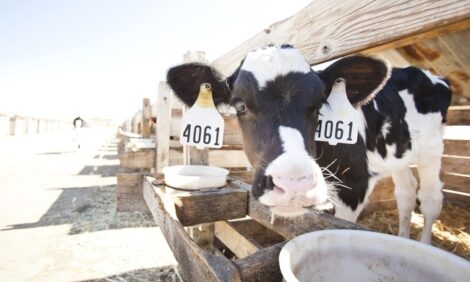



How will US Dairy Exports Deal with Drought?
US - US dairy suppliers will be tested next year, as drought diminishes milk supply and ag production around the world, according to the US Dairy Export Council.As of October 2, 40 per cent of the contiguous United States was
classified as being in “severe” drought or worse. As bad as
that number sounds, it hadn’t been that low since early July.
The United States remains mired in the worst drought since
the 1930s and it is having a momentous impact on the US
and global food industries.
Monthly US milk production fell 0.3 per cent in August
(compared to August 2011), the first decline since January
2010 and directly attributable to drought. USDEC projects
milk output will drop 0.3 per cent for the remaining four
months of the year and remain in the red through at least
the first quarter of 2013, with costs squeezing margins and
discouraging expansion.
The decline will hit US milk powder and butter the hardest.
USDEC estimates nonfat dry milk/skim milk powder (NDM/
SMP) production will drop 8-10 per cent over the next 12
months, which equates to about 90,000 tons.
“That could significantly impact US milk powder exports—
our largest volume product after whey proteins,” says Alan
Levitt, USDEC vice president, communications and market
analysis.
“We estimate about half—45,000 tons—could
come from volumes earmarked for the world market, but
the extent to which suppliers pull back from exports largely
depends on price movements and the strategic position
world markets occupy at individual companies.”
US NDM/SMP price indices as of late September were
nearly at parity with Oceania spot prices—a rare occurrence
for the usually lower-priced US product and a blow to US
competitiveness.
Cheese supplies are expected to be sufficient, but pricing
also poses a challenge. Since early 2006, US cheddar
prices had only been above Oceania spot prices for a handful of weeks. Since July, however, the tables have
turned, putting the United States at a cost disadvantage.
US suppliers will be challenged to maintain share
and volume should conditions hold.
Demand steady to rising . . . for now
The good news is that the fundamentals behind the
long-term rise in global dairy consumption remain in
place. Emerging market demand has been strong,
despite slowing economic growth in key Asian markets.
But whether demand growth continues at a strong
pace into 2013 is another story.
Severe weather has stunted agricultural production in a
number of regions, suggesting the world is due for another
run-up in food prices that could erode consumer
purchasing power, particularly in developing countries
where a large proportion of income is spent on food.
Downside risks, like a deepening of the European debt
crisis, could heighten the situation.
That does not necessarily portend a major demand
pullback. The Food Price Index from the UN Food and
Agriculture Organization grew 8 per cent from June-
September, yet demand held.
“Recent history has shown that emerging market
consumers appear willing and able to maintain dairy
consumption levels at relatively higher costs,” says
Marc Beck, USDEC executive vice president, strategy
and insights. “With supply short and the price gap
far thinner than normal, the United States could lose
share of global NDM/SMP. But strong developing world
demand, constrained supplies out of Europe and the
prominent position the United States holds in global
NDM/SMP trade—30 per cent of the market—suggests
we will remain a significant player.”
How the United States ultimately recovers from the
drought will heavily depend on when normal weather
returns. USDEC expects US milk output to bounce
back in 2014 and 2015 with gains of 2.1 per cent and
1.8 per cent, respectively.
“US processors and producers have received the
message that if US dairy is to continue growing at a
healthy pace it must be an eager, active and committed
player in international markets,” says Mr Levitt. “Rising US
production is dependent on demand from outside our
borders and to capitalize on that potential, we must
face the challenges that come with serving that market,
including the challenges caused by drought.”
TheCattleSite News Desk


